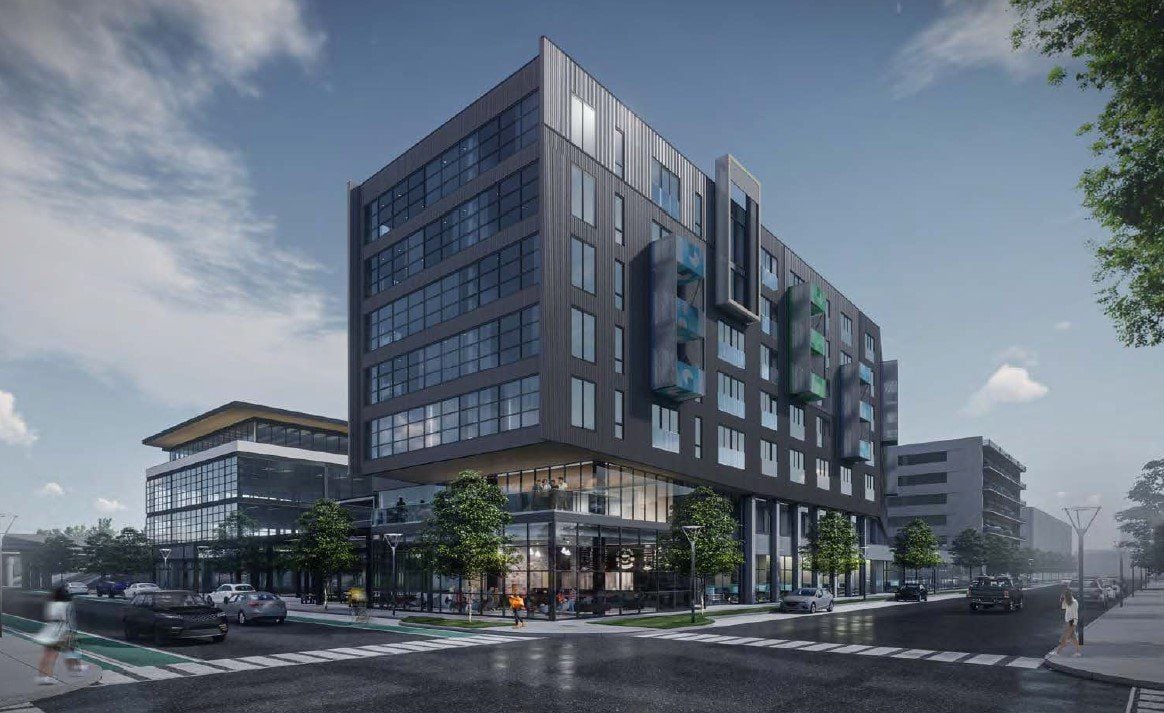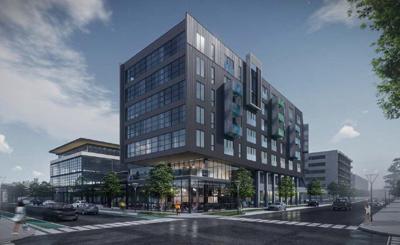ST. LOUIS ŌĆö New apartments and offices in the Central West EndŌĆÖs Cortex tech district, stalled for months amid negotiations with political leaders, finally took a step forward Tuesday after winning an endorsement from an aldermanic committee.
Developers disclosed that 32 units of ŌĆ£workforce housingŌĆØ ŌĆö apartments with some measure of rent control ŌĆö would be part of the 161-unit apartment building planned as part of the project. The units were added as part of a loan a real estate fund affiliated with Greater ėŻ╠ę╩ėŲĄ Inc. plans to extend to the project.┬Ā
On the drawing board for years, developer KDG began moving forward with the project at the southwestern corner of Sarah Street and Clayton Avenue in April. But its request for subsidies as part of the Cortex tax increment financing district came just as Mayor Tishaura O. Jones took office on a platform promising tougher negotiations for development incentives. The areaŌĆÖs new alderman, Tina Pihl, was elected on a similar platform.
People are also reading…
By May, a hearing for the project at the cityŌĆÖs TIF Commission was canceled as Jones and Pihl re-entered negotiations with the developer and Cortex on the projectŌĆÖs incentives.
TuesdayŌĆÖs vote at the ėŻ╠ę╩ėŲĄ Board of AldermenŌĆÖs Housing, Urban Development and Zoning committee was the first action on the project since June, when the cityŌĆÖs Planning Commission recommended rezoning for the now-vacant corner.
Under the boardŌĆÖs tradition, the alderman representing the area where a development is proposed must introduce and carry zoning and incentive bills. Pihl introduced the rezoning bill in November, five months after the Planning Commission vote.
A hearing on the Cortex bill had been scheduled for Dec. 7, but it was abruptly pulled the day before.
On Tuesday, Rob Lochner with KDG said developers still plan a seven-story, 161-unit apartment building and a four-story office building with about 120,000 square feet of space. They would also develop a 550- to 650-space parking garage, which would be sold to Cortex, a nonprofit formed by area universities, hospitals and other institutions.
Pihl said the project will include about 30 units of ŌĆ£workforce housing,ŌĆØ deemed affordable to someone making 80% of the areaŌĆÖs median income, . Affordable annual rent is calculated based on 30% of that figure.
Incentives for the project still need a hearing at the TIF Commission, where KDG and Cortex initially sought $14 million for the then $100 million project. The TIF assistance, which redirects new taxes generated by an areaŌĆÖs development, would come out of a limit of $167.7 million in TIF the city granted to Cortex in 2013. About $135 million of that has been allocated so far.
ŌĆ£WeŌĆÖre working closely with Alderwoman Pihl to finalize the subsidies and theyŌĆÖre well within what was anticipated in the master TIF,ŌĆØ Cortex general counsel Mike Sullivan told the committee.
JonesŌĆÖ spokesman Nick Dunne said the mayorŌĆÖs office is part of the Cortex negotiations but that Pihl is ŌĆ£taking the leadŌĆØ on this particular project. The push for workforce housing in Cortex, he said, is generally in line with other development deals the mayorŌĆÖs office has negotiated.
ŌĆ£WeŌĆÖre grateful to Alderwoman Pihl in this case for making this happen,ŌĆØ Dunne said.
EditorŌĆÖs note: The rent-controlled apartment units in the residential structure planned for Cortex are part of a proposed loan agreement between the developer and a real estate financing affiliate of Greater ėŻ╠ę╩ėŲĄ Inc. outlined in the spring. Tina Pihl, the 17th ward alderman, was not part of the negotiations to add those units to the project.
















